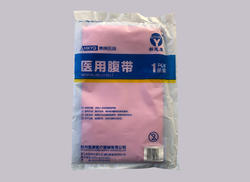From the perspective of human physiological structure, because the blood circulation of the nasal mucosa is very strong, the channels in the nasal cavity are very tortuous, and the nose hair constitutes a "barrier" for filtering. When air is drawn into the nostrils, the airflow forms a vortex in the tortuous passage, warming the airflow drawn into the nasal cavity. Some tests have shown that when cold air at minus 7°C is inhaled into the lungs through the nose, the airflow has been heated to 28.8°C, which is very close to the temperature of the human body. If you wear a mask for a long time, the nasal mucosa will become fragile and the original physiological function of the nasal cavity will be lost, so you cannot wear a mask for a long time. Masks can only be worn in special environments, such as places with many people and poor ventilation. Of course, when walking in the wild, in order to resist wind, sand and cold, or in an environment with air pollution, you need to wear a mask, but the time should not be too long. In addition, during the flu season, you should also wear a mask when going to public places where there may be a large number of pathogenic bacteria. Wearing a mask is only one of the ways to prevent respiratory infections, and the most important thing is to maintain good living habits.

Cleaning and maintenance
The outer layer of the mask often accumulates a lot of dust, bacteria and other dirt in the outside air, while the inner layer blocks the exhaled bacteria and saliva. Therefore, the two sides cannot be used alternately, otherwise the dirt contaminated by the outer layer will be directly close to the mask. When the face is inhaled into the human body, it becomes a source of infection. When the mask is not worn, it should be folded and placed in a clean envelope, and the side that is close to the nose and mouth should be folded inward. Do not stuff it into your pocket or hang it around your neck.
If the mask is wet with exhaled heat or saliva, its function of blocking germs will be greatly reduced. Therefore, it is usually best to prepare a few more masks for replacement, which should be changed and washed once a day. When washing, it should be scalded with boiling water for 5 minutes.
Masks should be cleaned and disinfected every day. Both gauze masks and air filter masks can be disinfected by heating. The specific method is:
1. Cleaning. Gently rub the gauze mask with warm water and soap first. The bowl-shaped mask can be gently brushed with a soft brush dipped in detergent, and then washed with clean water. Please be careful not to rub it hard, because if the gap between the warp and weft of the gauze is too large, it will lose the effect of preventing droplets.
2. Disinfection. Soak the cleaned masks in 2% peracetic acid solution for 30 minutes or boil in boiling water for 20 minutes or in a steamer for 15 minutes, then dry for later use. This method is suitable for gauze masks and bowl masks.
3. Check. Before using it again, you should carefully check whether the mask and face shield are still in good condition. For gauze masks and face shields, the light transmission inspection method can be adopted, that is, take it before the lamp to see if there are obvious light spots, and the middle part and the edge part are transparent. If the rate is the same, if in doubt, replace it with a new one. In any case, face shields and masks are generally renewed after 3 to 7 washings, and masks of particularly good quality can be washed 10 times. Activated carbon adsorption masks should pay attention to replacing the activated carbon interlayer regularly. If the activated carbon interlayer is not replaceable, it should be replaced after 7 to 14 days. This kind of mask cannot be washed and reused.















